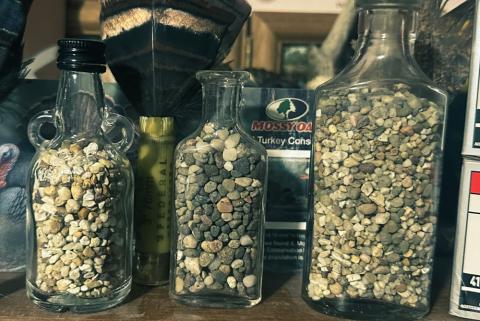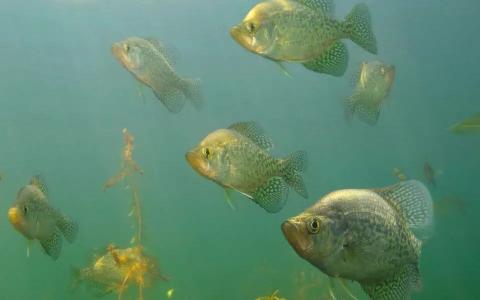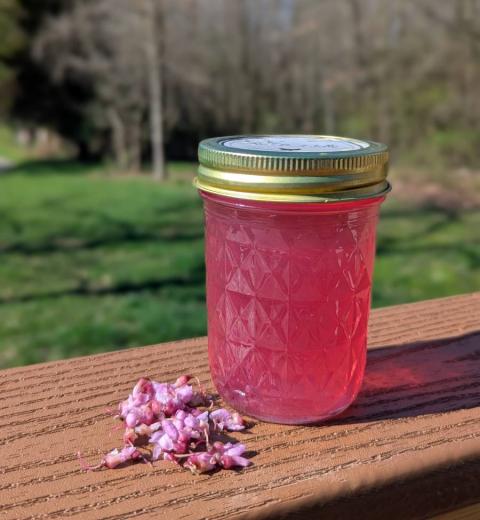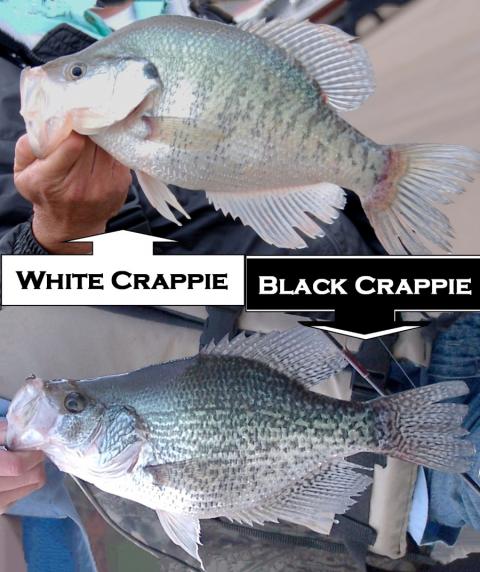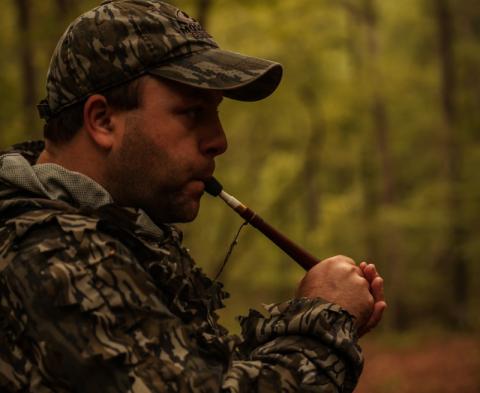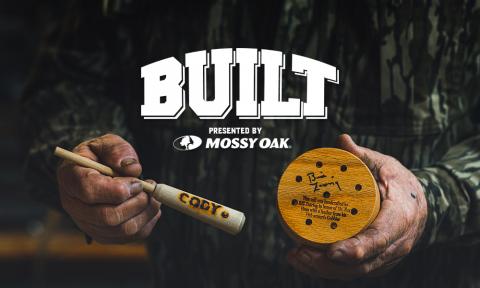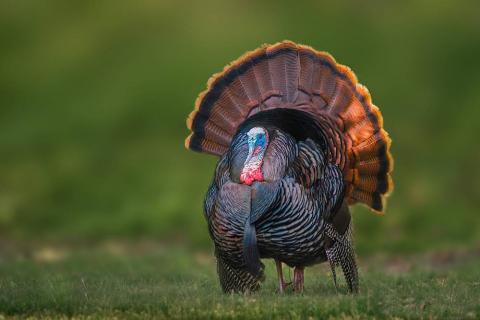As you look ahead to the next fishing season, there are several things you can do in your downtime to prepare so you’re organized, equipped, and ready to go. Before you can hit the water next season, you’ll need to ensure you’re stocked up on all the necessary fishing supplies and you’ve checked everything off your to-do list.
Here’s your guide on restocking your tackle box with what you’ll need for future fishing trips.
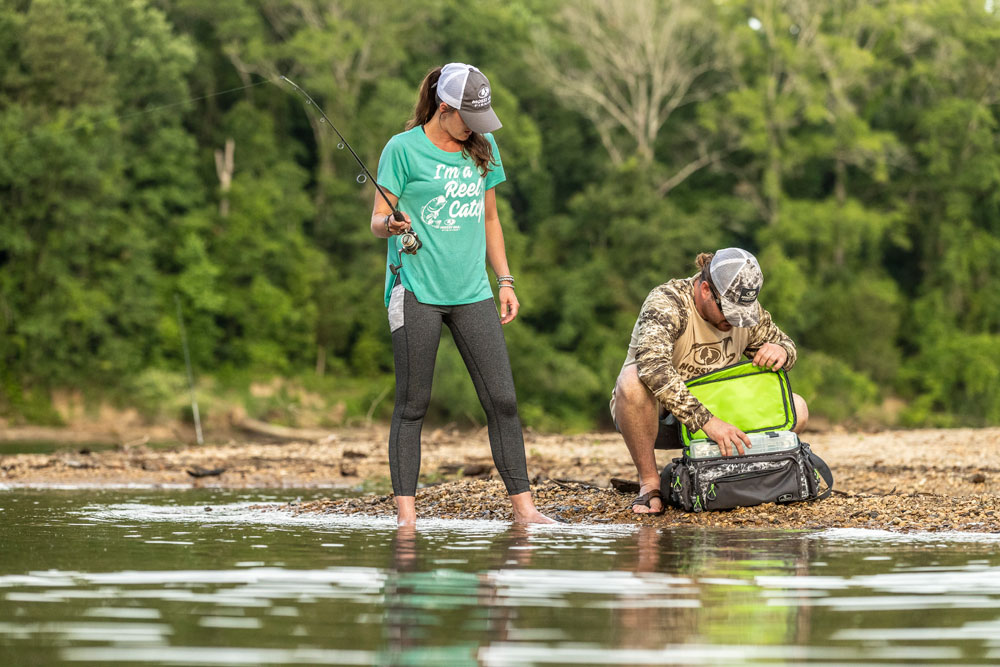
Prep Rods and Reels
After you’ve hung up your rod for the season, you’ll need to do a bit of preparation for next season’s fishing adventures to make sure your fishing rods and reels are in tip-top shape. You should always look over your rods for damage, carefully inspecting the lines guides to ensure they’re not broken. Additionally, it’s a good practice to keep them clean, which you can easily do with warm water and soap.
Next, you should do your best to maintain your fishing reels by keeping them clean and lubricated for optimum performance. While today’s spinning reels are built to last, properly maintaining them can help them run more smoothly for even longer.
For most spinning rods, you can remove them from the reel to wipe away any grime with a damp cloth. Low-pressure running water can also help to do away with built-up dirt or sand. Next, you can use a dry cloth to dry off the reel and use WD-40 or another oil-based lubricant to grease it lightly. Overdoing it could cause build-up and attract more dirt, but you can help repel water and prevent corrosion with a few spritzes.
Finally, you’ll want to remove old lines as needed, recycle them, and replace them with new lines for the upcoming season. For a fishing line that will last several years, consider using superline high-performance braid, which is thin but robust.
If your rod and tackle storage is not great, use this time to make improvements. Ideally, your rod and tackle storage are clean and secure. For some reason, spiders, crickets, and other insects can always find their way into your fishing gear. It’s a good idea to keep your gear sorted by the type of fish you use it for.
After you’ve tackled this important maintenance, take some time to learn about or refresh your memory on how to tie fishing hook knots. While everyone has their go-to, every angler should know at least five basic knots.
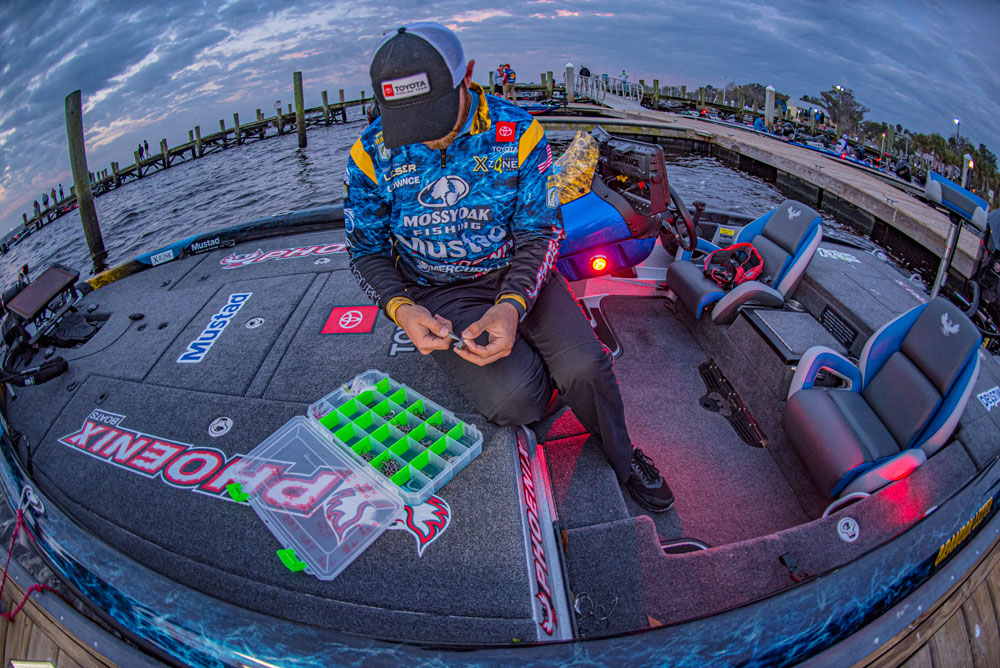
Clean Your Tackle Box, Inventory, and Restock
Once you’ve taken care of your fishing rods and reels, it’s time to clean your tackle box, including tools like pliers and scissors. After a whole season of fishing, things can get dirty and disorganized in your tackle box if you’re not carefully cleaning and returning items to their designated spot after each trip. Use your downtime to empty your tackle box, trays, and bags to wipe everything down and clean off and lubricate your tools.
Next, you should take stock of what you have by inventorying each piece of equipment and taking note of what you need to restock. If you have all the necessary tools but find your knife or other devices need sharpening, now is an excellent time to get them sharpened. It can also help to label each tray so you can quickly identify where to find your tackle and where to put it back.
As you inventory each item, be sure to carefully inspect your bait and cut any leftover knot tags, and make a note of damaged or rusty lure components or hooks that need to be replaced. After you’ve put all undamaged tackle back in its place, it’s time to shop for the tackle box essentials that need to be replaced and maybe add a handful of new tackle to your collection.
Beyond replacing damaged, worn, or missing tackle, this is the perfect time to consider additional equipment that may help you find more success on your future fishing trips. Some of the most used tackle that need replenishing include hooks, sinkers, and lures.
When shopping for new lures, consider some of the latest in lure technology. For instance, there are innovative lures with scatter lips to help your bait move back and forth without any rod movement on your end. This type of lure is effective for all game fish types, whether you’re trolling or casting. You can even find plastic worms that descend more slowly in the water and provide a larger scent field, along with a natural texture and color to attract fish effectively.
If you are a tournament angler, do a little homework on the lakes you plan to compete on. Now is the time to stock up on lures that work well on those lakes. You should consider a tackle box for each lake that is stocked with those lures. If work gets crazy right before you leave for the lake, you at least have your lures.
You should also stock up on extra line, hooks, bobbers, and sinkers, which can snap and be lost. And don’t forget the most crucial tackle box item: your fishing license. If you don’t already have one, consider getting a plastic sleeve to keep it protected from the water.
Prepare Other Fishing Gear
In addition to tackle and other tools stored in your tackle box, you should inventory and stock up on other fishing gear like attire and safety gear.
Look over your rain gear and waders and make sure they are free of holes and other damage. If they are in good shape but require some cleaning, be sure to clean them either in the washer or by hand washing. Next, inspect safety gear like your personal flotation devices (PFDs) and ensure they are in good working condition. If they are damaged or expired, add them to your replacement list.
Depending on the time of year, fishing trips can expose you to all kinds of weather conditions. For sunnier days, you’ll want to make sure you have ample supplies of personal protection, such as sunscreen, as well as bug repellent for more humid and muggy trips. If you’re low on any of the products or they’re past the expiration date, replace them.
Use this time to make sure your ice chests are good and clean. You don’t want lake water sitting in your ice chest all off-season. Make sure the drain cap is there and not in the bottom of your boat. Soft-sided ice chests should be checked for leaks or tears.
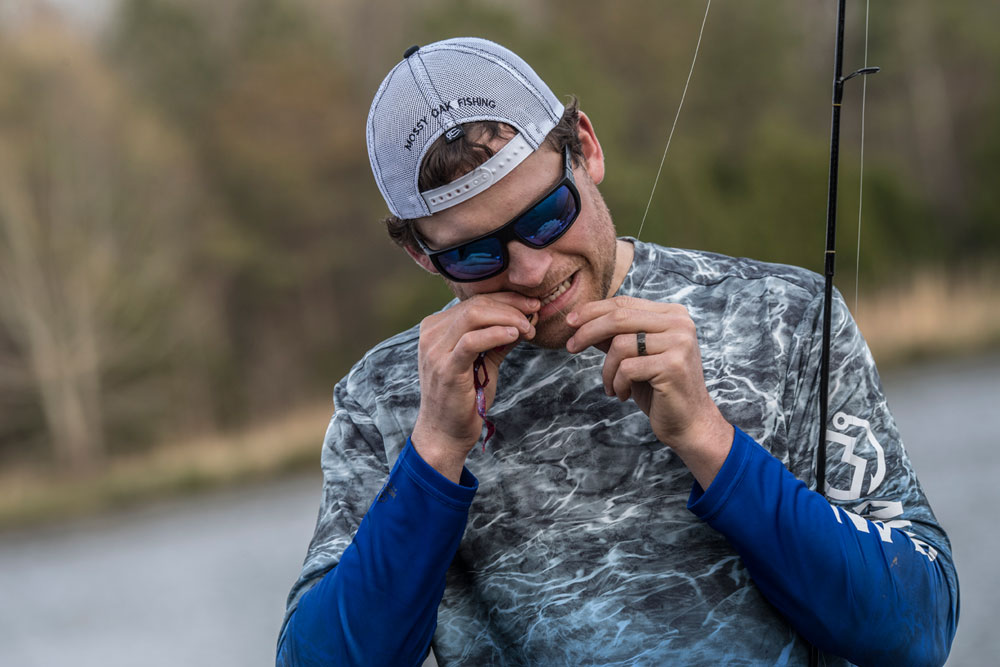
Service Your Fishing Boat
If you have a fishing boat, you have a bit more prep work to do. Besides cleaning your boat inside and out, this is an excellent time to perform general service and maintenance. If you use GPS or other electronics, it’s also a good time to do the necessary software updates and take advantage of new features to aid you on your fishing trips.
You should also ensure your boat and trailer are registered and licensed for the upcoming season. Having this in advance of your first fishing trip enables you to get out on the water faster without running into any issues.
You should also closely inspect your trailer and tires for damage. If you’ve got a leaky tire, make sure to patch it or replace it — and fill up your tires before you hit the road next season. Don’t forget to check the spare tire to see if it still holds air. While you are at it, you might as well pack the wheel bearings.
Now is the time to conduct a walk-around inspection of the trailer. Look for any rust or cracked welds. Check the coupler, chains, and trailer plug-ins for wear and tear. Double-check the running lights, turn signals, and brake lights.
Check the seats and carpet for rips and tears. Now is the time to get them fixed. They will only get worse if you don’t. Plus, the upholstery places are not as busy in the off-season. Check the floor for soft spots, especially around the console.
This is a good time to check your nets, looking for tears and dry rot. You can catch a replacement net on sale this time of year — especially if you hit a fishing expo in the community center. Try going to the last day of the show since you can get a real bargain then.
Take a look at your fuel lines, fuel tank, and batteries. Make sure the fuel lines are not dry rotted and fuel tanks do not leak. Make sure the battery box is clean, battery connections are secure, and batteries are fully charged.
The downtime between seasons is also a great opportunity to reconfigure your fishing boat for the optimal fishing experience. Much like your tackle box, having designated places for each piece of equipment, including rods and reels, hook extraction tools, and safety gear, can make a world of difference and increase your efficiency on every trip.
Finally, once you have your boat storage configured and are getting close to the start of the season, it’s time to start putting your fishing gear back on the boat. Safety gear like your PFDs, a first aid kit, and a fire extinguisher should all be placed onboard and remain there for the entirety of the fishing season to protect you and your fishing companions.
In Conclusion
With a little bit of cleaning, inventorying, and some trips to the bait store, there is a lot you can do during the off-season to prepare for next season’s fishing trips. By preparing your fishing rods and reels, cleaning out and restocking your tackle box, replenishing and storing other fishing gear and safety equipment, and preparing your fishing boat, you can ensure you won’t have anything standing in the way of you and the water for your next fishing trip.
















